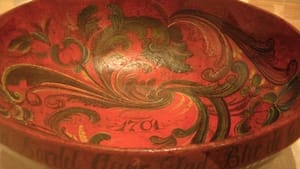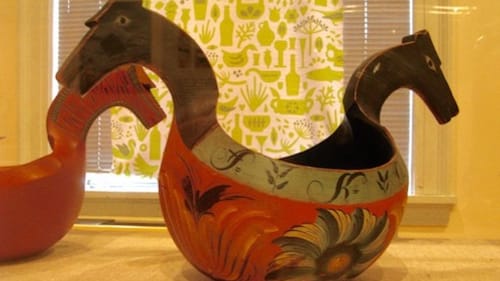Stay in the Loop
BSR publishes on a weekly schedule, with an email newsletter every Wednesday and Thursday morning. There’s no paywall, and subscribing is always free.
Here's to Scandinavia!
American Swedish Historical Museum presents 'Skål! Scandinavian Spirits'

Even Americans who speak only English become multilingual when making a toast: slainté (Irish Gaelic), cin cin (Italian), salud (Spanish). When Americans of Danish, Norwegian, orSwedish descent raise a glass, the toast is likely skål, and that tribute serves as the threshold to the American Swedish Historical Museum’s (ASHM's) exhibit of drinking traditions and artifacts. Organized by the Museum of Danish America in Elk Horn, Iowa, and presented by Aalborg and Linie Aquavit, Skål! Scandinavian Spirits features guided tours and tastings, including Smörgåsbeer on July 29, 2017.
Safer than water
Pronounced “skoal,” the word means "bowl," specifically a shared vessel filled with beer. Scandinavians have been brewers for 1500 years, a gift said to have come from the Norse god Odin. Used for celebrations and worship, beer was also a daily essential. With the safety of water in doubt, even the community’s youngest members consumed it, though early beers were less potent (only about 2 percent alcohol).
Distilled spirits came into wide use about 500 years ago and were often touted as having medicinal benefits. But by the 16th century, the proliferation of alcohol began to affect sobriety on a broad scale, leading to a period called the Great Nordic Intoxication. Still, people were aware of the dangers of overindulgence, judging by one ale-bowl inscription: “A little drink is good for a man, but if he wants more, take the bowl away from him.”
Immigration and abstinence
Scandinavian immigration to the United States began rising in the mid-19th century and peaked at the start of the 20th century. Many came to pursue temperance, forming the International Order of Good Templars, which supported abstinence and hosted alcohol-free events. Interestingly, a Minnesotan with Norwegian roots, U.S. Rep. Andrew John Volstead, wrote the Volstead Act, the enabling legislation for national prohibition, which lasted from 1920 to 1933.
Despite concerns about consumption, production of distilled liquors, or braenderin, contributed to Scandanavian cultures and economies. By the 1820s, Norway had 11,500 home stills and Sweden, 33,000. Beginning in the 19th century, governments began to exert more control over the production and sale of alcoholic beverages by imposing regulations and taxes. These, in addition to the growing preference for the more complex potato fermentation over grain fermentation, caused the number of small producers to plummet.

Sweden’s signature liquor
Aquavit, a clear liquor flavored with herbs and spices, notably caraway, became closely associated with Scandanavia. Sweden is the largest producer of aquavit, marketing about 20 brands. It is served at holidays and for special occasions, and often accompanies the traditional smörgåsbord. It’s served chilled, in small, stemmed glasses, and takes its name from the Latin aqua vitae, water of life.
Aquavit is usually bottled immediately after distillation, though Linie, a Norwegian brand, is aged in oak casks, a tradition that arose by accident. In 1805, a supply of the liquor exported to the East Indies was not purchased, remaining in barrels aboard ship. On the return trip, the crew sampled the unsold goods and approved of the mellowing produced by the unintentional aging. A new brand was born, named Linie (line) because it had twice crossed the equator. Linie aquavit is still aged at sea.
Parsing culture through potables
Through the lens of traditional drinks, Skål reveals culture and history. Carved, decorated wooden vessels recall mythological origins and are embellished with words handed down through generations. Delicate glasses and ornate bottles remind viewers of the long Swedish tradition of cut crystal and glassmaking.
Printed artifacts tell the stories, wishes, and ambitions of people living, celebrating, and worshiping in starkly beautiful lands. These include a thick book of traditional songs, photos of family gatherings, documents mapping the establishment of national industries and the growth of international trade, and advertising materials that introduced Scandinavian exports to the world.
What, When, Where
Skål! Scandinavian Spirits. Through September 17, 2017, at the American Swedish Historical Museum, 1900 Pattison Avenue, Philadelphia. (215) 389-1776 or americanswedish.org.
Sign up for our newsletter
All of the week's new articles, all in one place. Sign up for the free weekly BSR newsletters, and don't miss a conversation.